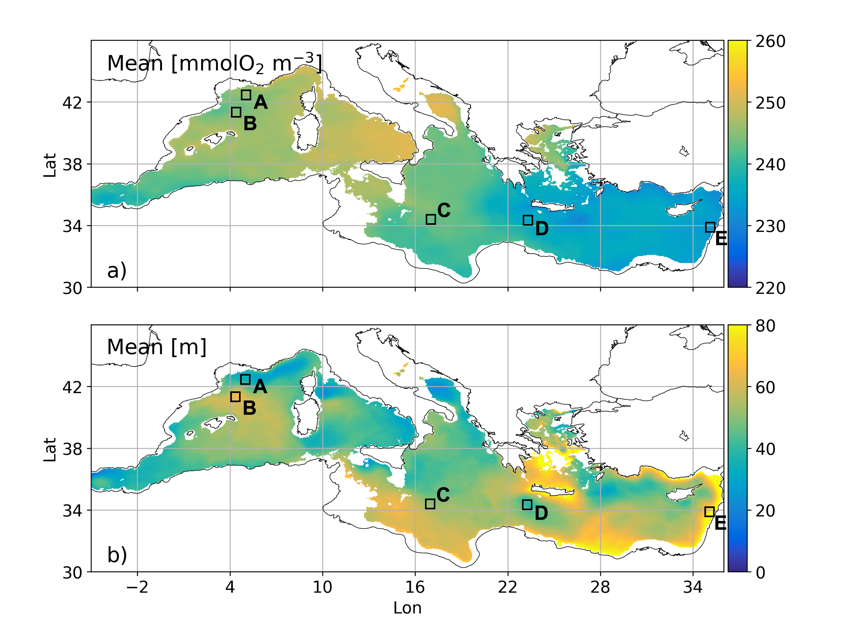
Apr 28 2023
A paper recently published on Biogeosciences investigates the Subsurface Oxygen Maximum (SOM) developing between spring and autumn in the Mediterranean Sea, by using the biogeochemical reanalysis of the Copernicus Marine Service. The SOM concentration (230 ÷ 250 mmolO2 m-3) and depth (30-100m) display a clear mesoscale variability and is associated with circulation structures, as well as biological production and density cap. On the other hand, no significant trends and weak interannual variability have been observed in the SOM features in the considered period (1999-2019).
The subsurface oxygen maximum (SOM) is observed in oligotrophic oceans and is associated with different physical and biological processes. This study characterizes the SOM in the Mediterranean Sea at the basin scale and investigates its driving mechanisms by analysing the output of the 1/24° resolution biogeochemical reanalysis provided by the Copernicus Marine Service for the 1999–2019 time period. We validated the model-derived oxygen concentration in the epipelagic layer at different spatial and temporal scales, including novel process comparisons with estimates from in situ observations. Moreover, using Biogeochemical Argo (BGC-Argo) float observations, we estimated the model uncertainty in reproducing the SOM concentration and depth in summer (13 mmol O2 m−3 and 13 m, respectively). The western and eastern Mediterranean Sea depicts different SOM signatures in summer, with higher oxygen values and shallower depths in the western Mediterranean. The concentrations and depths (in the ranges of 230–250 mmol O2 m−3 and 30–100 m, respectively) are in agreement with the estimations from the literature and show mesoscale variability patterns. The western Mediterranean also shows a stronger biological activity, specifically oxygen production and consumption, along the whole epipelagic layer and higher oxygen concentrations at the surface throughout the year, but heavy undersaturated waters are associated with winter deep convection in the northwestern Mediterranean Sea. A 1-year analysis conducted on selected areas that are representative of the heterogeneity of summer SOM highlighted that the SOM can actually be sustained by biological production (as in northwestern Mediterranean areas), or it can be a residual of the confinement of spring production (as in the central Ionian area) and vertical motions influence its depth (as in the Levantine subduction area).
